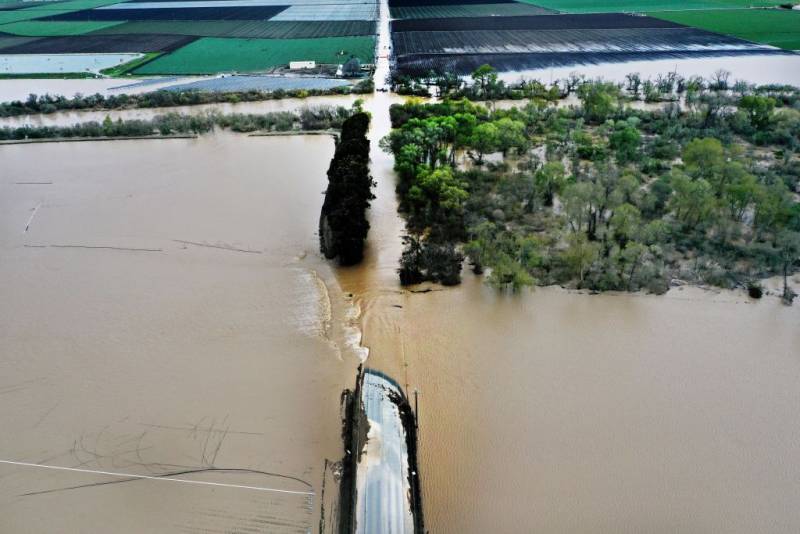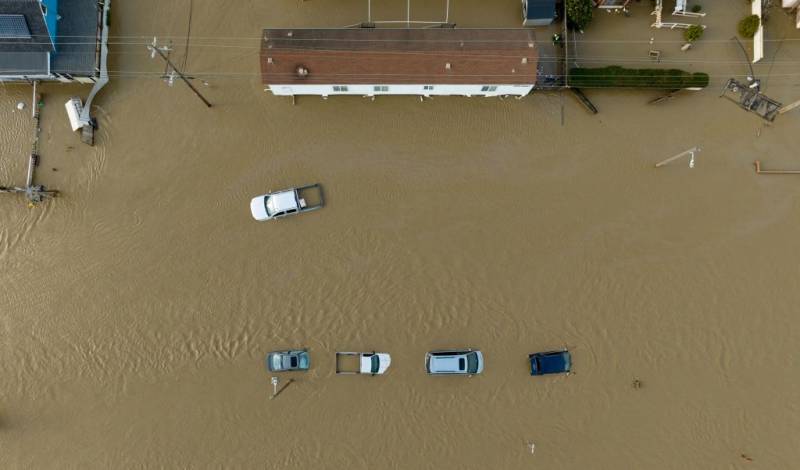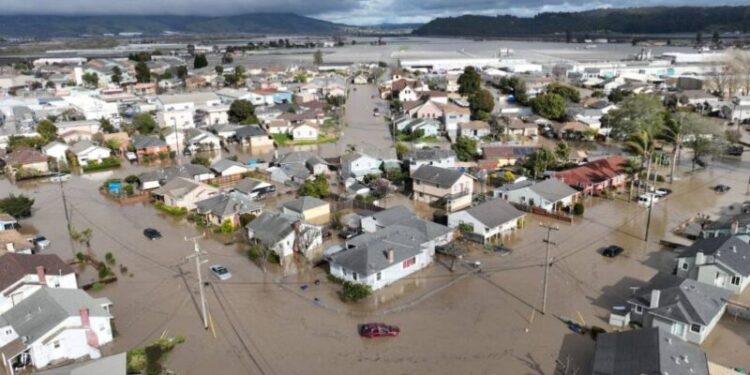The California Department of Water Resources proactively tracks levee incidents within the Central Valley as part of its state flood control plan but doesn’t for those outside it. Still, the state has sent assistance to both Salinas and Pajaro.
“We need to have coordinated work to improve our fundamental understanding gaps, to develop practice-ready tools to be able to better capture this evolving risk,” said Vahedifard.
The ratings from the Army Corps consider how much damage and loss of life could happen if a levee fails, along with its integrity.
The region’s 53 low- and moderate-risk levees in places like Alameda, Pajaro, Petaluma, Richmond and Walnut Creek help protect $63 billion of property, more than 450,000 people and more than 119,000 buildings
Vahedifard said all levees have the possibility of failing at some point, and climate change increases their fragility. “A low-risk levee does not mean it’s safe forever,” he said. “It’s no secret that California has a marginal levee system.”
He studies how repetitive droughts and floods — like the current multiyear dry spell with back-to-back atmospheric river storms within it — weaken and threaten the life of the state’s levees.
Because of climate change, atmospheric river-fueled winter storms could become around 30% wetter by mid-century, according to a study published in the journal Nature Climate Change.
 Strawberry fields and roads fill with floodwaters as the Salinas River breaks through levees during an atmospheric river storm, in Salinas, on Tuesday, March 14, 2023. (Melina Mara/The Washington Post via Getty Images)
Strawberry fields and roads fill with floodwaters as the Salinas River breaks through levees during an atmospheric river storm, in Salinas, on Tuesday, March 14, 2023. (Melina Mara/The Washington Post via Getty Images)
On top of the severity of storms, Vahedifard said many of the levees are old. People constructed these aged levees with logs, dirt and anything else they could find during the 1900s for a climate that no longer exists.
Vahedifard said California has way more levees than the federal government has documented in its levee database.
“There are potentially 50% more levees in California that have not been documented,” he said, mostly of levees on private land with little or no maintenance records.
A lot to ask of a passive patch of dirt
While the levee breaks this year have been mostly on tributaries of rivers and creeks in rural areas, many of the levees at low or moderate risk in the region are in major urban areas like Alameda — during the atmospheric river storms in early January, a floodwall near a levee crumbled in a San Leandro neighborhood.
California’s population has ballooned over the past decades to nearly 40 million people, much more than when most levees were built. These piles of dirt of yesteryear are now tasked with several missions: to protect public safety, life, homes, businesses and highways while simultaneously being recreation paths, said Jay Lund, professor of civil and environmental engineering at UC Davis.
“It’s a lot to ask of a little passive patch of dirt stuck up on a steep slope,” he said.
 Cars and homes are engulfed by floodwaters in Pajaro, on Saturday, March 11, 2023. Residents were forced to evacuate in the middle of the night after an atmospheric river storm surge broke the Pajaro levee and sent floodwaters flowing into the community. (Josh Edelson/AFP via Getty Images)
Cars and homes are engulfed by floodwaters in Pajaro, on Saturday, March 11, 2023. Residents were forced to evacuate in the middle of the night after an atmospheric river storm surge broke the Pajaro levee and sent floodwaters flowing into the community. (Josh Edelson/AFP via Getty Images)
Flood agencies must comply with state requirements that levees protect urban areas with a 200-year level of flood protection in any given year. That translates to a 0.5% probability of flooding annually. But as climate-fueled storms intensify, Lund said, cities should prepare for deeper floodwaters, even as much as a 500-year flood event with a 0.2% probability. But other levees in rural areas have different standards.
The thing is, most people don’t understand what these probabilities mean, Lund said. But he has an idea to help residents understand flood risk in neighborhoods near levees.
“Maybe on all the street lamp posts, there should be a painted blue stripe at the level of the 100-year flood [and so on],” he said.
While California has always experienced floods — it is a boom-and-bust state with cycles of droughts and floods — human-caused climate change has made these events more intense and severe.
Unfortunately, it often takes a tragedy to spur people into preparing for natural disasters like flooding from atmospheric rivers, Lund said.
The Pajaro River levee breach could be the moment the state needs to get serious about updating outdated levees.
“We have floods and droughts frequently relative to other parts of the world and we pay more attention to water,” he said. “Does that mean we’re perfect? By no means. But it means we can’t be complacent for very long.”




















